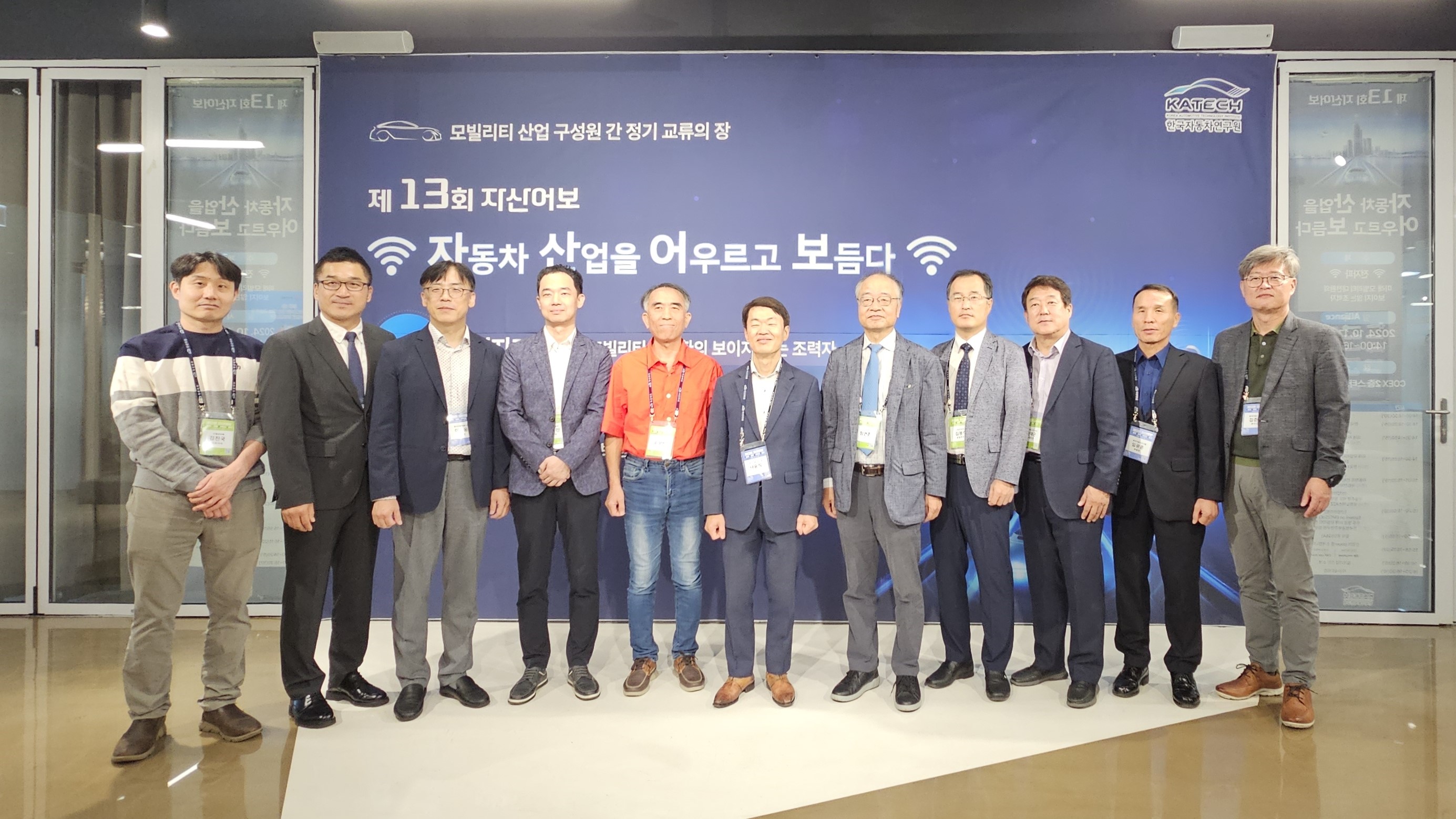미래 모빌리티 시대 전동화 추세로 차량 내 노이즈 발생이 큰 챌린지로 떠오른 가운데 핵심 원천기술인 전자파 응용 분야의 확대를 위한 교류의 장을 마련했다.

▲한국자동차연구원 나승식 원장이 제13회 자산어보에 참석한 발표 연사들과의 기념촬영 모습
한자연, 제13회 자산어보 개최
‘전자파’ 주제, 초연결 시대 대비
전장품 탑재↑, EMI 이슈 필연적
미래 모빌리티 시대 전동화 추세로 차량 내 노이즈 발생이 큰 챌린지로 떠오른 가운데 핵심 원천기술인 전자파 응용 분야의 확대를 위한 교류의 장을 마련했다.
한국자동차연구원이 서울시 강남구 코엑스 스타트업 브랜치에서 ‘전자파, 미래 모빌리티 대전환의 보이지 않는 조력자’를 테마로 제13회 자산어보 행사를 17일 개최했다.
한자연 나승식 원장, 이순웅 본부장을 비롯해, 국립전파연구원 김봉석 연구사, 오토노머스에이투지 신재곤 사업단장, 서경대학교 정연춘 교수 등 전자파 산업 분야 주요 관계자 120여 명이 참석했다.
이날 행사에는 미래 모빌리티 전환의 핵심 조력 기술로 주목받고 있는 전자파와 관련한 정책동향·기술현황 및 발전 전략에 대해 폭넓게 다뤄졌다.
정연춘 서경대 교수가 미래 자동차 발전과 EMX 전략에 대해 기조연설을 발표했으며, 정 교수는 “미래 자동차에서 가장 중요한 키워드는 ‘초연결성’으로, 자동차는 바퀴 달린 스마트폰이자 생활공간으로 봐야 한다”고 말하며, “초연결 자동차가 되면서 전자파 문제는 더욱 커질 것”이라고 지적했다.
초연결 자동차에서의 전자파에 대한 챌린지로 △자동차 내 전자장·전자파 환경 관리 △EMI/EMC △시스템 레벌 EM 엔지니어링과 기능안전 달성 △EMF·EMP △EM 보안 등을 언급했다. 정 교수는 “결국 시험과 인증이 지금 보다 더 발전돼야 한다”고 강조했다.
이어서 △미래 모빌리티 최적 전파환경을 위한 EMX 대응 기술(한자연 최범진 전파환경기술부문장) △자동차의 전파/전자파 현황 및 시사점(국립전파연구원 김봉석 연구사) △자율주행 제도 정책과 EMX 안전(오토노머스에이투지 신재곤 사업단장) △System on EMC(SOE) 기반 우주 항공 미래 모빌리티 전략(한국항공우주연구원 임성빈 박사) △선도기업 발표(현대자동차, 이엠코어텍) 등의 다양한 자동차 EMI/EMC 관련 인사이트들이 공유됐다.
한자연 신뢰성·인증기술연구소 산하 ‘전파환경기술부문’의 연구성과·기술컨설팅 부스 및 혁신 기업 이앤알, 이엠코어텍, 용인전자 등 3개사 홍보 부스 운영을 통해 다양한 기술 교류와 신규 협력기업 발굴 지원에 앞장섰다.
나승식 한자연 원장은 “자동차 내 전장품은 2030년까지 30% 비중을 차지할 것으로 예측되며, 앞으로는 원가 절반이 전자부품이 될 것이다”라면서 “다양한 전장품이 적용되면서 부품 자체에서 전자파로 인한 부작용뿐 아니라 복합적으로 상호 연계된 간섭으로 인해 안전사고 등 심각한 문제가 발생할 수 있다”고 우려했다.
이에 “한자연은 앞으로도 산업 구성원 간 교류와 협력을 통해 전자파 기술의 발전과 경쟁력 강화로 이어질 수 있도록 구심점 역할을 다하겠다”면서 “이번 행사를 통해 여러 전문가들과 함께 지식을 공유하는 시간이 되길 바란다”고 덧붙였다.
